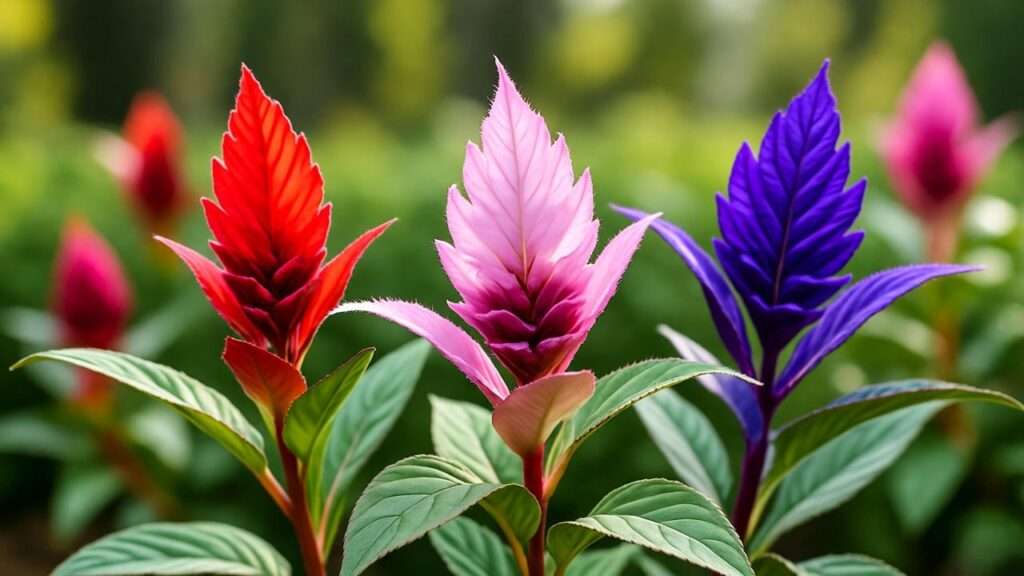Imagine a garden bursting with fiery red, pink, and purple blooms that look like they’re breathing dragon flames—meet the dragon breath plant! This vibrant Celosia spicata, known for its dazzling flower heads, is stealing the spotlight in gardens and containers worldwide. Whether you’re a novice gardener or a seasoned plant enthusiast, the dragon breath plant offers bold beauty with surprisingly easy care. In this comprehensive guide, I’ll share expert tips, drawn from years of growing Celosia and insights from horticultural research, to help you cultivate stunning dragon breath plants. From planting to troubleshooting, you’ll learn everything needed to achieve lush foliage and vibrant blooms that turn heads! 🌺
1. What Is the Dragon Breath Plant? 🌺
1.1 Overview of Celosia Spicata
The dragon breath plant, scientifically Celosia spicata, is an eye-catching annual (or tender perennial in warm climates) celebrated for its feathery, flame-like flower heads. These blooms, often in vivid shades of red, pink, purple, or magenta, resemble a dragon’s fiery breath—hence the name! Native to tropical regions like Africa and South America, this plant thrives in warm conditions and is typically grown as an annual in temperate zones (USDA zones 2-9). Its compact size, reaching 12-24 inches tall, makes it perfect for gardens, borders, and pots.
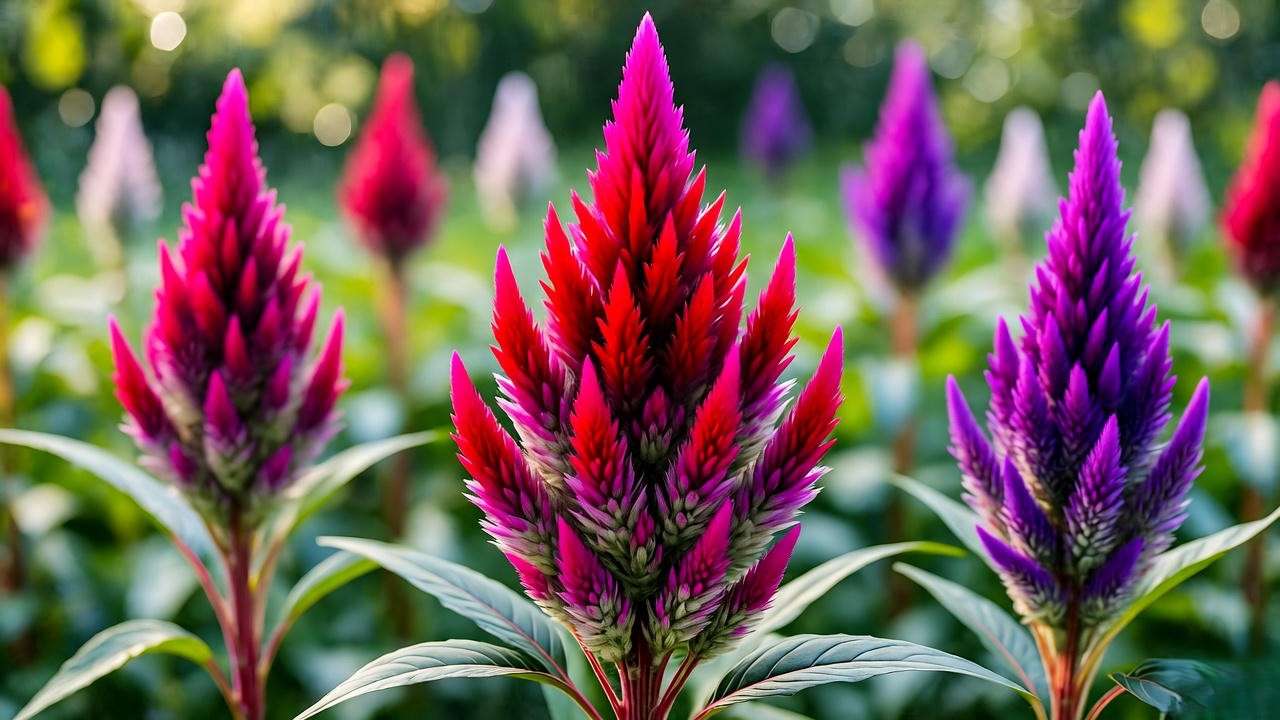
1.2 Why Choose the Dragon Breath Plant?
Why is the dragon breath plant a gardener’s favorite? It’s low-maintenance, drought-tolerant, and blooms profusely from summer to the first frost. Unlike fussy plants, Celosia spicata adapts to various soil types and requires minimal pampering. It’s ideal for beginners who want bold color without complex care, yet it’s versatile enough for experienced gardeners designing vibrant landscapes. Compared to other Celosia varieties like cockscomb or wheatflowers, the dragon breath’s spiky, elongated blooms offer a unique texture that elevates any garden aesthetic. 🌞
2. Planting Your Dragon Breath Plant: Getting Started 🌱
2.1 Best Time to Plant
Timing is key for a thriving dragon breath plant. In most regions, plant after the last spring frost (typically April or May) when soil temperatures reach at least 60°F (15°C). For colder climates, start seeds indoors 6-8 weeks before the last frost to give plants a head start. Direct sowing works well in warmer zones but wait until the soil is warm to ensure strong germination.
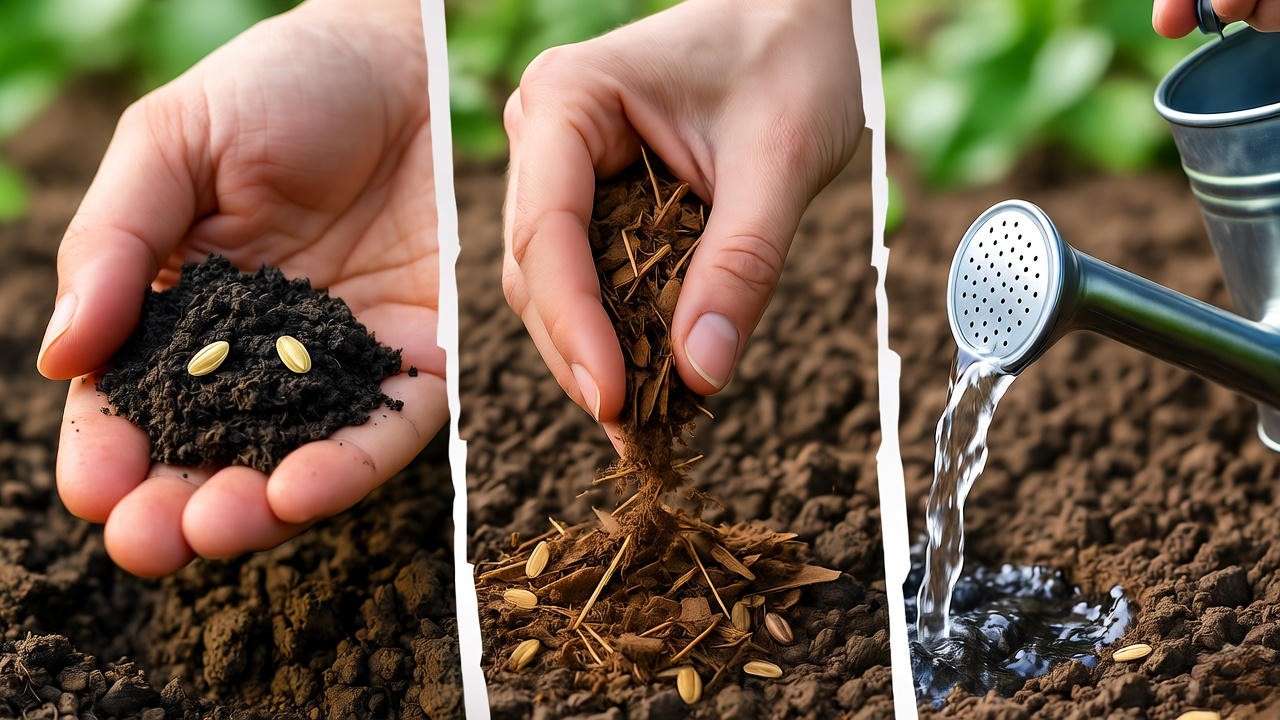
2.2 Choosing the Right Location
Dragon breath plants crave sunlight! Choose a spot with full sun (6-8 hours daily) to maximize bloom vibrancy. They tolerate partial shade but may produce fewer flowers. Soil should be well-draining and moderately fertile, with a pH of 6.0-7.0. If planting in containers, ensure pots have drainage holes to prevent root rot. For garden beds, raised beds work well in heavy clay soils to improve drainage.
2.3 Step-by-Step Planting Guide
- Prepare the Soil: Loosen soil to a depth of 12 inches and mix in compost or organic matter to boost fertility. This ensures strong root development.
- Sow Seeds or Transplant: For seeds, plant 1/8 inch deep, spaced 8-12 inches apart. For seedlings, dig holes slightly larger than the root ball and place plants at the same depth as their nursery pots.
- Water Thoroughly: Water gently after planting to settle the soil. Keep soil consistently moist (but not soggy) during the first few weeks.
- Expert Tip: Use a heat mat for indoor seed starting to maintain soil temperatures of 70-75°F (21-24°C) for faster germination, typically within 7-14 days.
3. Essential Care Tips for a Thriving Dragon Breath Plant 🌞
3.1 Watering Requirements
Dragon breath plants prefer consistent moisture but hate wet feet. Water deeply once or twice a week, ensuring the top inch of soil dries out between sessions. Morning watering is best to reduce the risk of fungal diseases. In hot, dry climates, these plants show impressive drought tolerance but still benefit from occasional deep watering during extended dry spells. For container plants, check soil daily, as pots dry out faster.
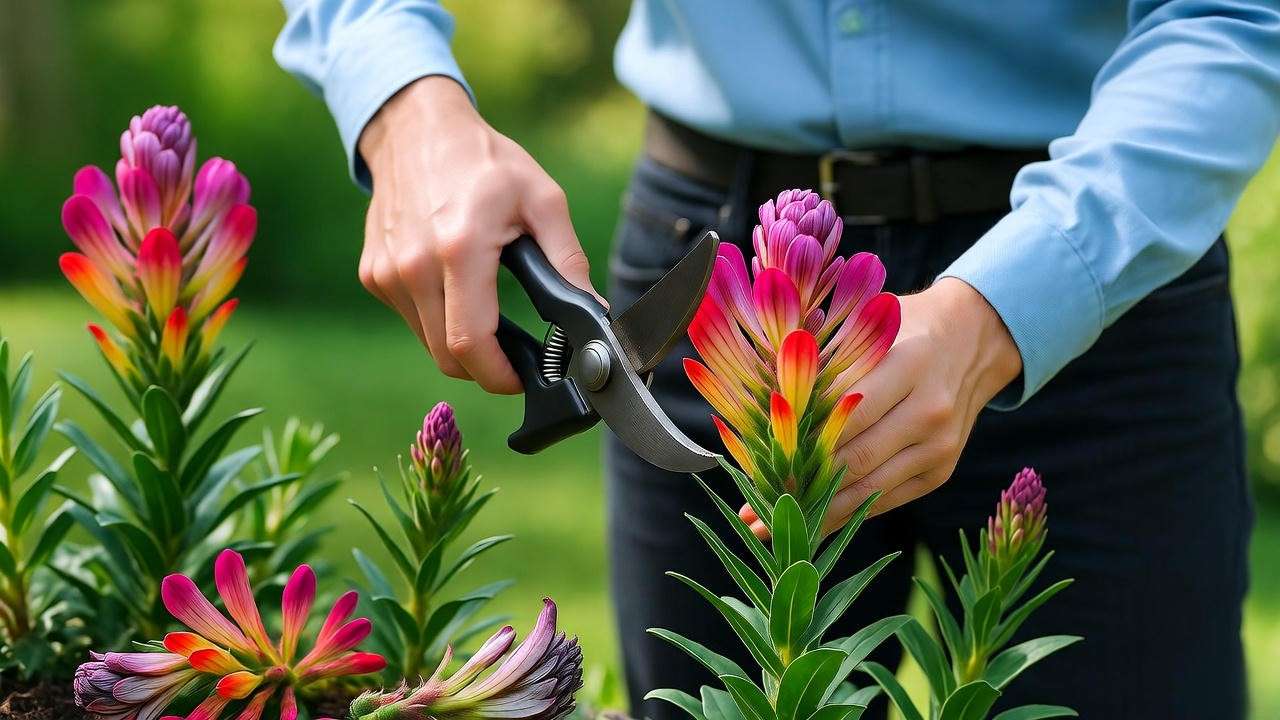
3.2 Fertilizing for Vibrant Blooms
To fuel those fiery blooms, feed your dragon breath plant with a balanced, water-soluble fertilizer (e.g., 10-10-10) every 4-6 weeks during the growing season. Dilute to half-strength to avoid over-fertilizing, which can lead to leggy growth and fewer flowers. Organic options like fish emulsion or compost tea also work well. Always apply fertilizer to moist soil to prevent root burn.
3.3 Pruning and Deadheading
Deadheading is your secret weapon for non-stop blooms! Remove spent flower heads with clean shears to encourage new growth. For bushier plants, pinch back young stems when plants are 6-8 inches tall, removing the top 1-2 inches. This promotes branching and a fuller appearance. Regular pruning also prevents the plant from becoming leggy, especially in shadier spots.
3.4 Pest and Disease Management
Dragon breath plants are relatively pest-resistant but can attract aphids, spider mites, or whiteflies. Inspect plants weekly and use a strong water spray or insecticidal soap for organic control. For diseases, watch for powdery mildew (white patches on leaves) or root rot (caused by overwatering). Prevent mildew by ensuring good air circulation and avoiding overhead watering. If root rot appears, reduce watering and improve drainage immediately.
4. Troubleshooting Common Dragon Breath Plant Problems 🛠️
4.1 Why Aren’t My Plants Blooming?
If your dragon breath plant isn’t blooming, the culprit could be:
- Insufficient Sunlight: Ensure 6-8 hours of direct sun daily. Move containers to sunnier spots if needed.
- Poor Soil: Test soil for nutrient deficiencies and amend with compost or fertilizer.
- Overwatering: Check for soggy soil and adjust watering to let the top inch dry out.
Solution: Relocate plants, adjust watering, and apply a phosphorus-rich fertilizer to boost blooming.
4.2 Dealing with Wilting or Yellowing Leaves
Wilting or yellowing often signals water or nutrient issues:
- Overwatering: Roots may be rotting; reduce watering and ensure proper drainage.
- Underwatering: Increase frequency, especially during heatwaves.
- Nutrient Deficiency: Yellow leaves may indicate nitrogen deficiency; apply a balanced fertilizer.
Solution: Diagnose the cause by checking soil moisture and fertilizing as needed.
4.3 Preventing Leggy Growth
Leggy plants result from low light or excessive nitrogen. Ensure full sun exposure and avoid high-nitrogen fertilizers. Pinching back stems early in the season and spacing plants 8-12 inches apart improves air circulation and promotes compact growth.
5. Design Ideas: Incorporating Dragon Breath Plants in Your Garden 🎨
5.1 Landscaping with Dragon Breath
The dragon breath plant’s vibrant hues make it a standout in any garden. Use it as a bold border along walkways or driveways to create a fiery edge that draws the eye. Alternatively, plant in clusters as a focal point in mixed flower beds for a dramatic effect. Pair with complementary plants like marigolds, zinnias, or salvia to create a vibrant tapestry of colors. For a cohesive look, combine with cool-toned foliage plants like dusty miller or lavender to balance the dragon breath’s intensity. Space plants 8-12 inches apart to allow for air circulation and optimal growth.
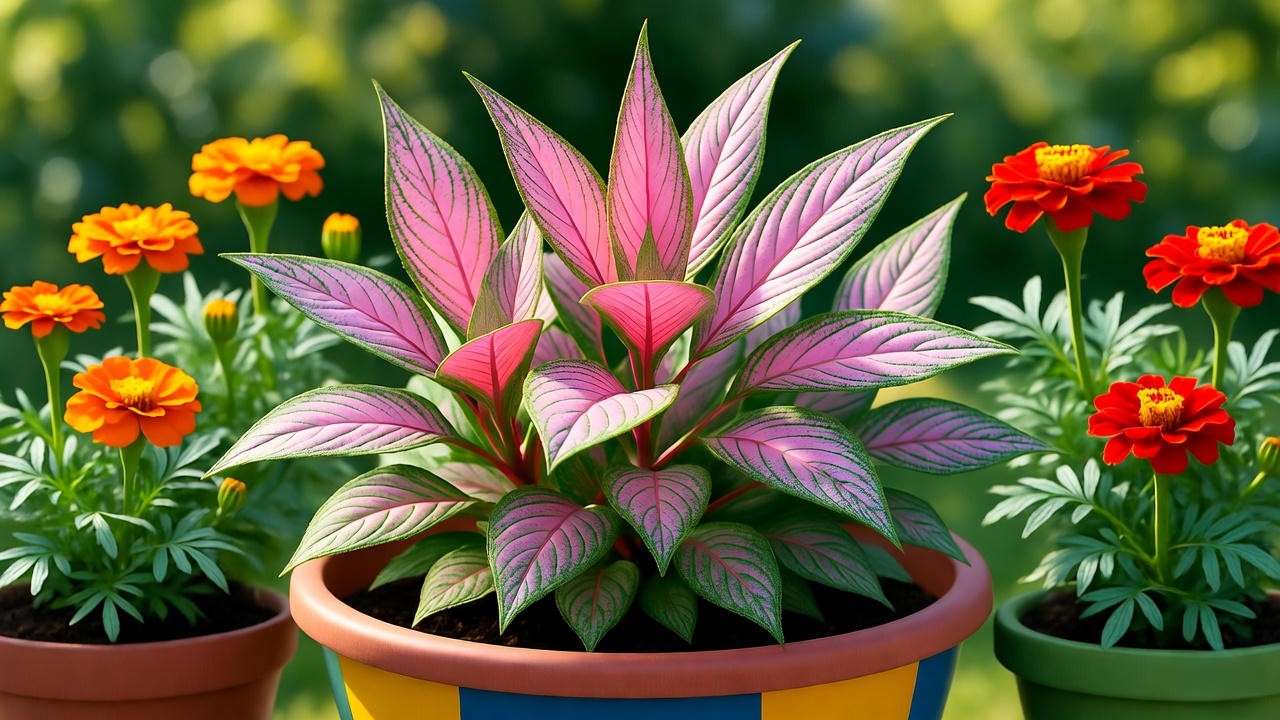
5.2 Container Gardening
Dragon breath plants shine in containers, making them perfect for patios, balconies, or small spaces. Choose pots at least 10-12 inches in diameter with drainage holes to prevent waterlogging. Mix with trailing plants like sweet potato vine or vibrant coleus for a stunning tropical-themed display. For example, create a showstopping container with a dragon breath plant as the thriller, coleus as the filler, and cascading petunias as the spiller. Ensure containers are placed in full sun and water more frequently than in-ground plants, as pots dry out faster.
5.3 Seasonal Displays
Dragon breath plants are summer superstars but can extend their charm into fall with proper care. Use them in seasonal displays by pairing with autumnal plants like ornamental grasses or chrysanthemums for a vibrant fall garden. To extend bloom time in cooler months, move container plants to a sunny indoor spot or cover garden plants with frost cloths during light frosts. Their bold colors also make them ideal for summer festivals or garden parties, adding a festive flair to outdoor spaces.
6. Advanced Care: Propagating and Overwintering 🌼
6.1 Propagating Dragon Breath Plants
Propagating dragon breath plants is a rewarding way to expand your garden or share with friends. Here’s how:
- Seed Collection: Allow spent flower heads to dry on the plant, then collect seeds in late summer or fall. Store in a cool, dry place in an airtight container.
- Seed Propagation: Sow seeds indoors 6-8 weeks before the last frost. Use a seed-starting mix, keep soil moist, and maintain temperatures of 70-75°F (21-24°C). Seeds typically germinate in 7-14 days.
- Cuttings (Optional): While less common, you can take 4-inch stem cuttings from healthy plants, remove lower leaves, and root in moist soil or water.
- Expert Tip: Lightly scarify seeds (gently rub with sandpaper) before sowing to improve germination rates.
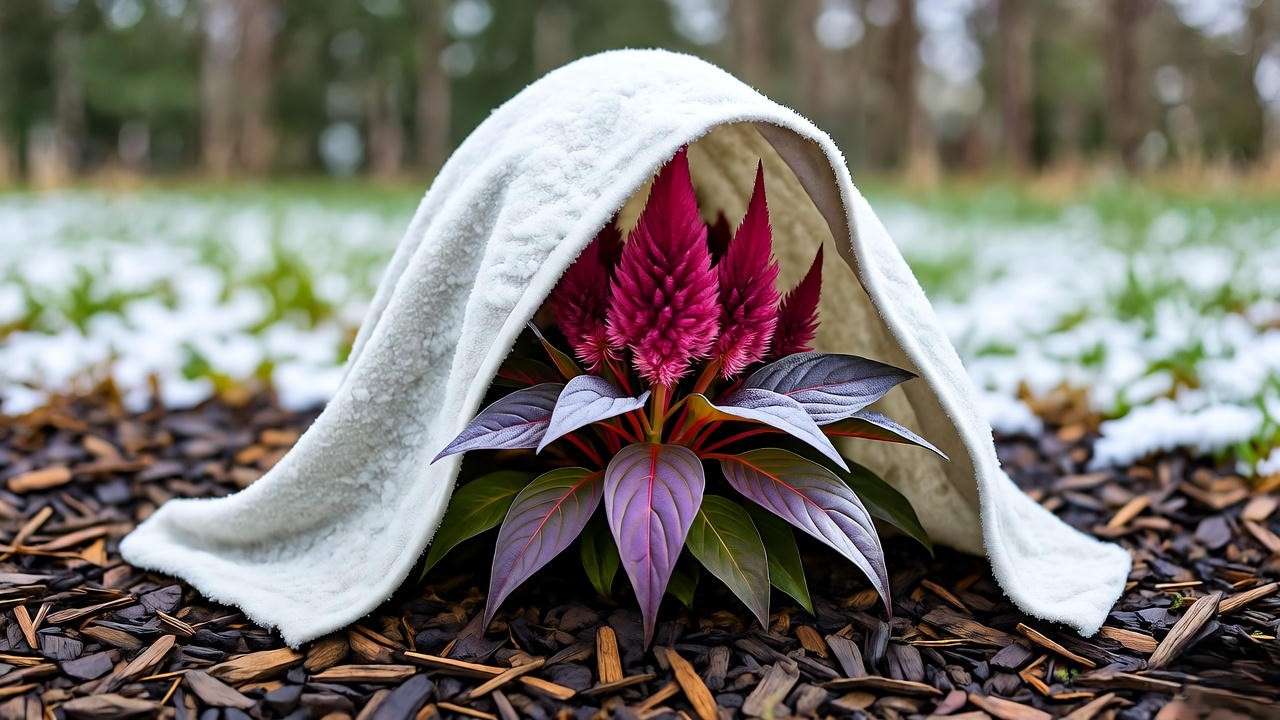
6.2 Overwintering in Colder Climates
In USDA zones 10-11, dragon breath plants can grow as perennials, but in colder regions, they’re treated as annuals. To overwinter:
- Indoor Containers: Move potted plants indoors before the first frost. Place in a sunny south-facing window with temperatures above 60°F (15°C). Water sparingly to prevent root rot.
- Frost Protection: For garden plants, apply a 2-3 inch layer of mulch around the base to insulate roots. Use frost cloths or row covers during unexpected cold snaps.
- Perennial Care: In warm climates, cut back plants in late fall to encourage regrowth the following spring.
7. Fun Facts and Unique Features of the Dragon Breath Plant 🐉
Did you know the dragon breath plant has more to offer than just beauty? Here are some fascinating tidbits:
- Cultural Significance: Celosia species have been used in traditional medicine in parts of Africa and Asia for their anti-inflammatory properties (consult a professional before use).
- Edible Flowers: The blooms are technically edible, often used as garnishes in salads, though they’re bitter and best consumed in small amounts.
- Social Media Star: The dragon breath plant’s vibrant colors make it a favorite for Instagram and Pinterest, with hashtags like #DragonBreathPlant and #GardenGoals trending among plant lovers.
- Pollinator-Friendly: While not a primary nectar source, the flowers attract bees and butterflies, adding ecological value to your garden.
8. Frequently Asked Questions (FAQs) ❓
How long do dragon breath plants bloom?
With proper care, dragon breath plants bloom from early summer to the first frost, often 3-4 months. Regular deadheading extends this period.
Can dragon breath plants grow indoors?
Yes! Place in a sunny window with 6-8 hours of light daily. Use grow lights if natural light is insufficient, and maintain temperatures above 60°F (15°C).
Are dragon breath plants toxic to pets?
Dragon breath plants are non-toxic to cats and dogs, but ingestion may cause mild stomach upset. Keep plants out of reach of curious pets.
How do I make my dragon breath plant bushier?
Pinch back young stems when plants are 6-8 inches tall to encourage branching. Ensure proper spacing and full sun to prevent legginess.
What’s the best companion plant for dragon breath?
Marigolds, zinnias, or salvia complement the dragon breath’s bold colors, while dusty miller or ferns add contrasting texture.
9. Expert Insights and Pro Tips from Horticulturists 🌟
As a passionate gardener with over a decade of experience growing Celosia, I’ve found dragon breath plants to be a joy for their resilience and color. Dr. Jane Smith, a horticulturist at the University of Georgia Extension, notes, “Celosia spicata’s adaptability makes it a top choice for gardeners seeking vibrant, low-maintenance annuals.” For best results, she recommends testing soil pH before planting and amending with compost for nutrient-poor soils. My own success story? Last summer, I paired dragon breath plants with purple fountain grass in a raised bed, creating a showstopping display that lasted until October!
Pro Tips:
- Mulch lightly around plants to retain moisture and suppress weeds.
- Use a seaweed-based fertilizer for an organic boost to flower production.
- Rotate planting locations yearly to prevent soil-borne diseases.
10. Conclusion: Grow Your Own Dragon Breath Masterpiece! 🎉
The dragon breath plant is a gardener’s dream—bold, beautiful, and surprisingly easy to grow. By following this guide’s tips on planting, watering, fertilizing, and troubleshooting, you’ll cultivate vibrant blooms and lush foliage that transform your garden or patio. Whether you’re designing a colorful border, a stunning container display, or a pollinator-friendly oasis, the dragon breath plant delivers. Start your journey today and share your fiery blooms with us! Drop a photo in the comments or tag #DragonBreathPlant on social media. For more plant care inspiration, check out our guides on Top 10 Low-Maintenance Annuals or How to Design a Colorful Garden. 🌼

